The Ultimate Guide to the A. Lange & Söhne Lange 1 Collection – 1994-2022 (incl. Video)
All you need to know about one of the most important watches created post quartz crisis.
The word icon is, unfortunately, used and abused by the industry. There are, nevertheless, true iconic watches, most of them introduced during the golden era of mechanical watchmaking during the 1950s and 1960s. When it comes to “modern icons”, watches that have been presented after the quartz crisis, few can rival the importance of the Lange 1, a watch that has been instrumental in the resurrection of the A. Lange & Söhne brand, of German watchmaking and of the whole concept of high-end horology. This formidable resurrection can be attributed to the genius of Günter Blümlein. Today, we’ll revisit the A. Lange & Sôhne Lange 1 by bringing you an in-depth and as exhaustive as possible guide looking at all models, all complications, all references, and illustrated by a movie featuring the brand’s CEO.
The story of the Lange 1 entirely coincides with that of the resurrection of A. Lange & Söhne. After rejuvenating Jeager-LeCoultre and IWC, Günter Blümlein (at the head of LMH, before it was acquired by Richemont) decided to bring back the idea of “Made in Germany” watches. Together with Walter Lange, a direct descendant of the founder of the manufacture, in 1990 Blümlein laid the first stone of what would become one of his most outstanding achievements, the revival of the A. Lange & Söhne brand.

On 24 October 1994, at the Dresden Royal Palace, Günter Blümlein, Walter Lange and Hartmut Knothe unveiled the inaugural collection of the new A. Lange & Söhne manufacture, consisting of the classic Saxonia, the rectangular Arkade, the über-complex Tourbillon “Pour le Mérite” and, of course, the Lange 1. And this watch, both for the brand and the industry, would become a game-changer, a watch that symbolises the rebirth of German watchmaking and a precursor of the renewal of high-end mechanical watchmaking.

The basics of the Lange 1
While the Lange 1 is regarded by most as the quintessential A. Lange & Söhne, a watch that in 2022 is almost identical (visually at least) to the model introduced in 1994, it remains a watch that is noticeable for numerous reasons. Behind its apparent classicism, the Lange 1 was a daring watch and is still today an impressive exercise of style and design.

First of all, back in 1994 the Lange 1 was a relatively large watch with a 38.5mm diameter – which, for the classic hand-wound model, remained unchanged over the entire course of its history. Second, even in its inaugural form, which is still the simplest version of this watch, the Lange 1 was already a fairly complex model with additional complications and a highly original display. It’s not so much about the complexity of the functions, but the way these are arranged on the dial that generates the complexity. Of course, the most important feature is the large date, referred to as an Outsize Date by ALS. It was inspired by the five-minute digital display clock found above the stage of the Dresden Opera House. The mechanism behind this date function is complex and relies on two oversized, overlapping discs.
But when it comes to the Lange 1, it is its display and its superbly calculated mess that stand out. At first sight, the dial might appear unbalanced, with randomly positioned functions. In fact, the idea was to have each function separated from the rest of the indications. Looking closely at the dial, you can see that there is method in the madness, relying on the mathematics of the golden ratio. Everything on the dial is the result of complex rules of symmetry and balance. Nothing has been left out and all the elements are sized and positioned according to precise calculations. And this is why, despite its apparent disorder, the dial of the Lange 1 seems so attractive.

Although the first models of Lange 1 were presented with closed casebacks, they were nevertheless equipped with a superbly finished movement, the hand-wound L901.0. Developed specifically for the watch (with a bit of help on the gear train from a Jaeger-LeCoultre calibre 822), the movement was conceived through and through with respect to German traditions. It is characterised by its 3/4 plate, entirely finished by hand and made mostly of German silver (giving it a specific colour and patina). The plate features decorative elements that were once the crowning glory of German watches – blued screws, gold chatons, hand-engraved balance cock… Power was delivered by twin mainspring barrels, resulting in a solid 72h power reserve.
The Lange 1 collection
What started as a stand-alone model in 1994 quickly transformed into an entire, extremely coherent collection of watches in various sizes and equipped with numerous complications, from a relatively simple moon phase indicator to superbly complex mechanisms such as a tourbillon or a perpetual calendar – or both at once…
Over the years, there have been no fewer than 12 different models in the Lange 1 collection; some have been permanent members of the collection, some are only seen on special occasions, some have been discontinued and some have been updated over the years.

Looking at the entire range of models that have been introduced by A. Lange & Söhne over the life of the Lange 1, from 1994 to 2022, the most noticeable fact is, without a doubt, the consistency in the design. Whichever model you look at, despite the added complications, the differences in material, the dial colours or the different dimensions offered, a Lange 1 is and remains a Lange 1. The brand has been extremely respectful of the original design created in 1994 and, as such, has to be credited for making this watch a true modern icon.
Let’s now have a closer look at each version of the Lange 1, in chronological order.
1994 – Lange 1
For obvious chronological reasons and because of the importance of this model – the first of its kind – it seems fair to start with the classic hand-wound Lange 1. Launched in 1994 as part of the inaugural A. Lange & Söhne collection, the Lange 1 is a watch that has been known under two series, and in various permanent or limited editions. All models have been made in precious metals – except a few dozen of special order steel models – and in 38.5mm cases, which is still the diameter used today. All series share the same display, with off-centred hours and minutes, small seconds, outsize date and power reserve indicator.

An important detail must be explained; the two types of early references, the 101.00X and the 101.02X. Visually and mechanically, these watches are identical, only with the difference between the casebacks. When presented in 1994, the Lange 1 featured a solid caseback, with all the references being 101.00X. Soon after, A. Lange & Söhne started to offer a sapphire caseback (as of 1995) with these models being known as the 101.02X. This situation will last until 1997/1998 when the brand both gradually changed reference system and also started to only offer, at least as standard, the Lange 1 with a sapphire caseback. However, a reference number 101.00X does not necessarily mean a solid caseback, and a reference number 101.02X isn’t necessarily equipped with a sapphire caseback. The reason is that some early watches have been modified on request with new sapphire casebacks, while some later models (normally with sapphire) could be equipped on request with a solid caseback. To make things clear, what really matters is the original papers and service history of the watch.
The first generation is characterised by its hand-wound calibre L901.0 with 72h power reserve but an outsize date that isn’t precisely jumping. The movement was based on the JLC 822 calibre, yet of course, only for the gear train calculation, the rest being entirely custom-made for this watch. This first generation was produced from 1994 to the end of 2014 and has been available in multiple editions, including some rare models such as the Darth, the Luminous or the 1A.
In 2015, at the SIHH, A. Lange & Söhne introduced an update of its iconic Lange 1. Mostly a technical release, the watch was 99% identical visually, with only minor differences for the bezel, fonts and logos. The movement, on the other hand, was an entirely new development. The hand-wound calibre L121.1 has an unprecedented architecture and now features a balance spring crafted in-house as well as a freely oscillating cam-poised balance. Since then, the outsize date has switched precisely at midnight as well. All the details regarding this update can be found here.
1998 – Little Lange 1
Following the success of its inaugural 1994 model in 38.5mm, in 1998 A. Lange & Söhne decided to bring a new and downsized edition of its soon-to-be iconic watch. While retaining all the assets of the classic edition, the Little Lange 1 came in a case reduced by 2.4mm (for the first generation), meaning a 36.1mm case.

Contrary to today, the first editions were not necessarily meant for a feminine audience, but mostly for men who desired a smaller watch. The movement, the hand-wound calibre L901.4, was the same as the classic Lange 1, except for a recessed pusher to correct the date instead of the classic prominent button.
Since 2018, the Little Lange 1 is available in its second generation, with a slightly larger diameter of 36.8mm and the same updated movement as the Lange 1, the twin-barrel hand-wound calibre L121.1, again with a recessed pusher. Today, this watch is mostly intended for a feminine audience, with mother-of-pearl dials, diamond-set bezels or light-coloured dials.
2000 – Lange 1 Tourbillon
To coincide with the turn of the millennium, A. Lange & Söhne presented the first Lange 1 with an additional complication… And not any kind of function, but an impressively well-integrated and superbly finished tourbillon.

Based on the same case diameter as the classic hand-wound Lange 1, meaning 38.5mm, the Lange 1 Tourbillon is an impressive development of the collection. Reutilising the classic display of the inaugural model, the position where the small seconds used to be was hollowed to reveal the anti-gravity regulating organ, yet the outsize date and the power reserve indicator were kept intact. It was, back in the days, the world’s first wristwatch endowed with a tourbillon, an outsize date, a twin mainspring barrel for a power reserve of 72 days, and a progressive power-reserve indicator. It was first powered by the hand-wound calibre L961.1. In 2010, it received an updated movement with stop-seconds, under the codes L961.2 and L961.3.
The Lange 1 Tourbillon is a rare watch, which has never been part of the permanent collection and has only been offered in limited editions. In addition to the platinum and pink gold inaugural models, it returned in 2010 with a honey gold case, for the 165-years collection “Homage to F.A. Lange”, and in 2014 with a black enamel dial as part of the coveted “Handwerkskunst” series. Finally, a silver-blue version was released for the 25th anniversary collection.
2002 – Lange 1 Moon Phase

In 2002, A. Lange & Söhne started to work on more classic complications to be added to the original display of the Lange 1. The first model to show an additional function (the tourbillon above being too special) is the Lange 1 Moon Phase. The beauty of this watch lies in the capacity of the watchmakers to integrate a new function while retaining the classic design and layout of the model, as none of the emblematic functions has been removed, and the additional moon is placed inside the small seconds. The diameter was kept at 38.5mm (and still is).
Fifteen years after its introduction, in 2017, the Lange 1 Moon Phase received a major movement with the new calibre L121.3, using the same base as the updated Lange 1. This new engine connects the moon phase with a day/night indicator. Behind the solid-gold moon, a celestial disc – also made of solid gold – performs exactly one revolution every 24 hours. The various times of day are depicted with a blue gradation. Also, the outsize date was now precisely jumping at midnight. The design was, on the other hand, marginally changed. You can read more details about this updated watch in this article.
2003 – Grand Lange 1
In 2003, A. Lange & Söhne, relying on the growing trend for oversized watches, released the Grand Lange 1. The case gained a whopping 3.4mm to measure 41.9mm in diameter with a height of 11mm. The first generation of Grand Lange 1 can be split into two periods, from 2003 to 2008, and from 2008 to 2012, when the second generation Grand Lange 1 was introduced.

As you can see, the first generation is characterised by its oversized case but still relies on the same base movement (L901.2) as the classic hand-wound Lange 1. As such, the display was altered by the updated sub-dials, larger than before and now overlapping. The same remark can be made about the outsize date, which crosses the hours/minute track. In this instance, the Grand Lange 1 lost some of the balance of the classic Lange 1. The first models (2003-2008) featured two-tone dials, reinforcing the presence of this watch on the wrist. As of 2008, the Grand Lange 1 was equipped with monochromatic dials, identical in style to the classic Lange 1.
A. Lange & Söhne updated the Grand Lange 1 in 2012 with the second generation. Using an entirely new and thin movement, the case was reduced to 40.9mm in diameter and 8.8mm in height. The single-barrel movement (L095.1) still provides 3 days of power reserve but was redesigned so the display would be more harmonious, without overlapping functions. In 2013, the Grand Lange 1 was released in a stunning LUMEN version with its semi-transparent dial revealing the mechanism of the first luminous outsize date display.
2003 – Grand Lange 1 Luna Mundi
A very special and rather unique piece in the collection, the Grand Lange 1 Luna Mundi is A. Lange & Söhne’s first two-watch set. Launched at the same time as the classic Grand Lange 1, it shares its size with this model but relies on the base movement of the first-generation Lange 1 Moon Phase, with its moon indication inside the small seconds. Just like the first generation Grand Lange 1, the adaptation of a smaller movement can be seen with the overlapping functions.
Depending on the model, the Grand Lange 1 Luna Mundi correctly displays the moon phases clockwise for the northern hemisphere (white gold) and anti-clockwise for the southern hemisphere (pink gold). There are two calibre versions: the L901.8 for the northern and the L901.7 for the southern hemisphere. In the latter, an additional wheel reverses the sense of rotation of the lunar disc. Released in white gold and in pink gold as a set comprising the two timepieces, the model was only produced once with a batch of 101 sets. The dials are adorned with a representation of a celestial object – Ursa Major for the white gold model, Southern Cross for the pink gold version. A rare edition that proceeds the 2014 Grand Lange 1 Moon Phase.
2005 – Lange 1 Time Zone
An important model in the Lange 1 collection is the Time Zone, A. Lange & Söhne’s answer to the needs of travellers. While the brand could have done it the simple way, by just displaying a GMT hand or an additional time zone in a sub-dial, ALS decided to take a more complex path and designed this world timer. It’s a clever solution since the peripheral city ring allows the layout of the dial to remain intact while bringing a multitude of indications to the wearer. The Lange 1 Time Zone has a great number of hands and sub-dials, yet legibility remained an important focus. In addition to the hours/minutes, a small seconds downsized and moved into this off-centred dial, the signature combination of Outsize date and power reserve, the Lange 1 Time Zone adds a second hours and minutes sub-dial in place of the classic small seconds and day/night indicators for each time zone. The peripheral city ring allows for synchronisation and an overview of 24h time zones around the world. This additional city ring meant the case has to be enlarged to 41.9mm.

There are two generations of Lange 1 Time Zone. The first, produced from 2005 to 2020, was powered by the hand-wound calibre L031.1 with two barrels for a 72h power reserve. This version is easily recognisable with its off-centred day/night indicators. It was available in most classic materials and was also released in two limited editions, including a rare and desirable honey gold version. It’s also the watch that is gifted to the winner of the prestigious Concorso d’Eleganza Villa d’Este, with eight unique pieces made from 2012 to 2019. These white gold editions are differentiated by their hinged caseback.
In 2020, A. Lange & Söhne presented the second generation Lange 1 Time Zone, with a new manufacture movement, calibre L141.1. Still a hand-wound movement, it retained the 3-day power reserve but now on a single barrel and came with new ring-shaped day/night indicators for improved legibility, as well as a new daylight-saving time indication. The case still measured 41.9mm and three versions were available, including a yellow gold limited edition. This new generation is detailed in this article.
2009 – Little Lange 1 Moon Phase
A watch launched in 2009, the Little Lange 1 Moon Phase follows the footsteps of both the Little Lange 1 of 1998 and the Lange 1 Moon Phase of 2002. The watch has thus known two generations, the first (2009-2017) being 36.1mm in diameter, like the Little Lange 1, and equipped with the same base movement as the Lange 1 Moon Phase 1st-gen, here dubbed calibre L901.9, due to the absence of the date pusher. With its mother-of-pearl dials and bezels often set with diamonds, it is a watch mostly dedicated to a feminine audience.
The 2nd-gen came in 2017, following the evolution of both the classic Little Lange 1 and Lange 1 Moon Phase, meaning a diameter increased to 36.8mm and a new manufacture movement, the calibre L121.2, whose base is shared with the Lange 1 Moon Phase (again without date pusher).
2010 – Lange 1 Daymatic
In 2010, A. Lange & Söhne injected a great dose of practicality to the Lange 1 by presenting the first automatic version, the Daymatic. This watch was not just limited to adding a self-winding mechanism to the existing Lange 1 model. First, it comes equipped with a brand new movement, calibre L021.1, with a central rotor and 50h power reserve. But modifications weren’t limited to the mechanics and the entire design has been drastically updated.
The case of the Lange 1 Daymatic measures 39.5mm in diameter, thus 1mm larger than the classic Lange 1. But more importantly, the Daymatic is a mirror image of the classic Lange 1 design, with all indications replaced. The idea was to make this watch more daily-compliant, with the hours/minutes dial partially visible under the cuff when worn. While most signature indications are still present, such as the outsize date, the power reserve (less relevant for an automatic watch) has been replaced here by a retrograde day-of-the-week indicator. The watch has known only one generation since its introduction in 2010. A comparison between the Lange 1 Daymatic and the classic Lange 1 can be read here.
2012 – Lange 1 Tourbillon Perpetual Calendar
In 2012, A. Lange & Söhne presented a watch that combines two of the most classic complications of Haute Horlogerie, and is incidentally the most complex Lange 1 to date: the Lange 1 Tourbillon Perpetual Calendar. In the same vein as the Lange 1 Time Zone, this watch relies on peripheral indications to display its perpetual calendar without affecting the original design of the Lange 1. As with the Daymatic, the display is mirrored and the watch combines the outsize date with a retrograde day indication, a peripheral and rotating month display combined with a pointer window that shows the leap year. A day/night indicator is also added to this complex watch.
Housed in a large 41.9mm case, the Lange 1 Tourbillon Perpetual Calendar is powered by the self-winding calibre L.082.1 with 50h power reserve and its tourbillon regulator with patented stop-seconds mechanism visible through the caseback only. This über-complex edition of the Lange 1 has noticeably been released as part of the Handwerkskunst series, with a fully engraved dial. We reviewed the white gold and grey dial version here.
2014 – Grand Lange 1 Moon Phase
Following the update of the Grand Lange 1 in 2012, and in the same vein as the Lange 1 Moon Phase and Little Lange 1 Moon Phase, A. Lange & Söhne released the Grand Lange 1 Moon Phase in 2014. Benefiting from the larger case size of 41mm and of the more spacious display offered by this oversized model, the brand managed to integrate the moon indication in a highly elegant way, inside the hours/minutes off-centred sub-dial, and not inside the small seconds like other Moon Phase models. As such, the celestial object is depicted in a far larger way on the dial.
The Grand Lange 1 Moon Phase is powered by the hand-wound calibre L095.3, based on the movement of the classic (updated) Grand Lange 1. It thus offers 72h power reserve and a display sized according to the enlarged diameter. In 2016, ALS presented the Lumen edition of the Grand Lange 1 Moon Phase, with its partially tinted sapphire dial revealing the luminous moon phase display and the outsize date, glowing in the dark. You can see our review of the model here, and the Lumen edition here.
2021 – Lange 1 Perpetual Calendar
The latest member of the Lange 1 family appeared in 2021 and is named Lange 1 Perpetual Calendar. This watch focuses entirely on the eponymous complication. It can be seen as a mix between the Daymatic and the Tourbillon Perpetual Calendar. Indeed, its movement, the calibre L021.3, is based on calibre L021.1 of the Daymatic and is thus equipped with a self-winding mechanism. It also relies on the mirrored display that is emblematic of this automatic version. On the other hand, it uses the same type of perpetual calendar display as its tourbillon counterpart, with a peripheral rotating month and retrograde day. It is also equipped with a precision moon phase inside the small seconds.
The Lange 1 Perpetual Calendar is one of the largest models in the collection, with a 41.9mm case that was necessary to position the indications in a legible way without affecting the signature display of the Lange 1. It is available in the permanent collection in pink gold with a grey dial. To mark its introduction, A. Lange & Söhne also presented an attractive white gold limited edition with a solid pink gold dial, which we reviewed here.
Calibre Overview
Over the entire course of its life, the Lange 1 collection has been home to no fewer than 17 different movements, all designed, manufactured and assembled in-house, in the small town of Glashütte.
For more details about A. Lange & Söhne and for an overview of the models currently available in the Lange 1 family, please visit www.alange-soehne.com.
20/01/2022 – multiple updates regarding the reference number of early models, the difference between closed (massive) caseback and sapphire caseback, reference number of early movements. We’d like to thank our reader Sergey Serebryakov for his help, as well as the teams at ALS with whom we’ve made some further research.

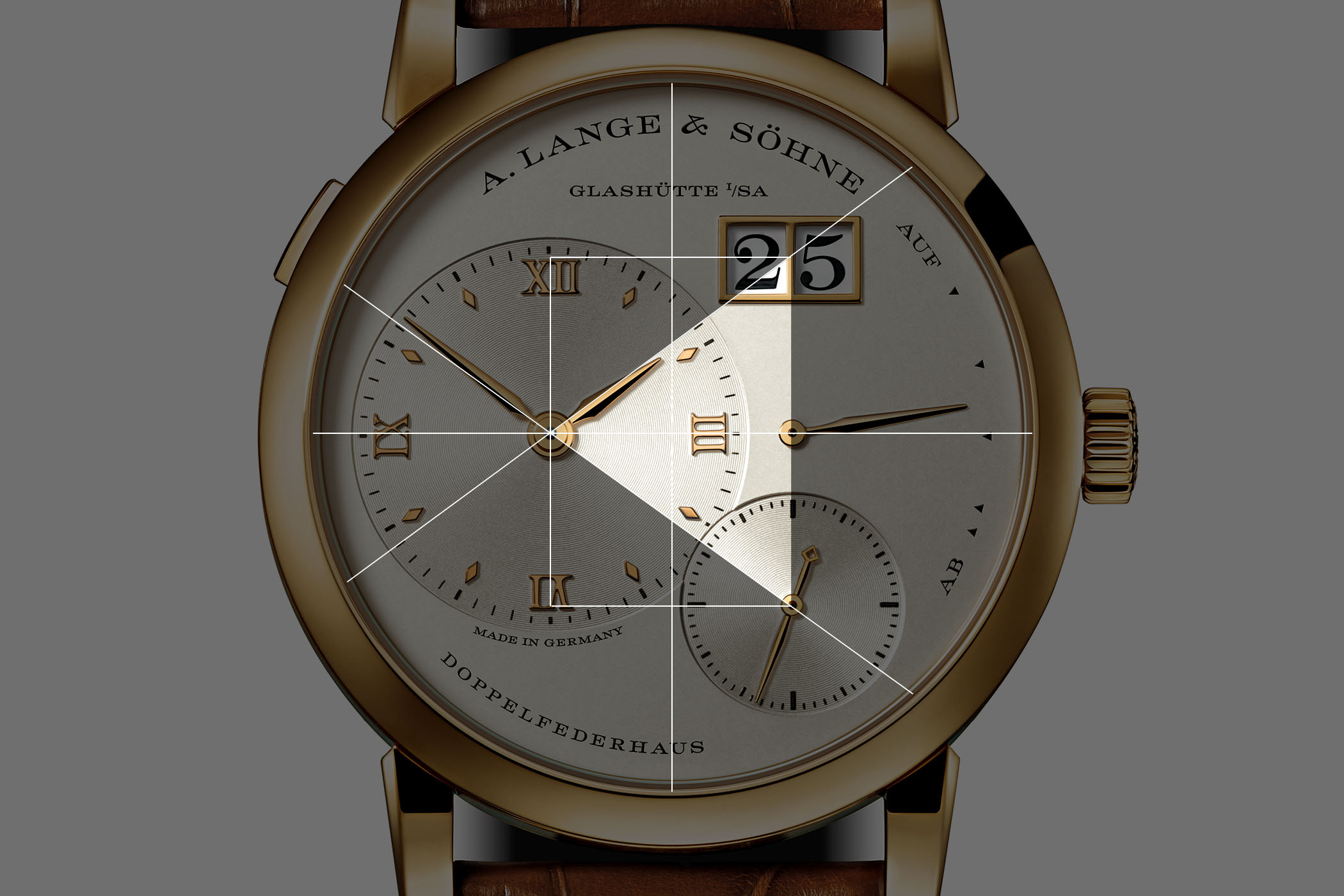
















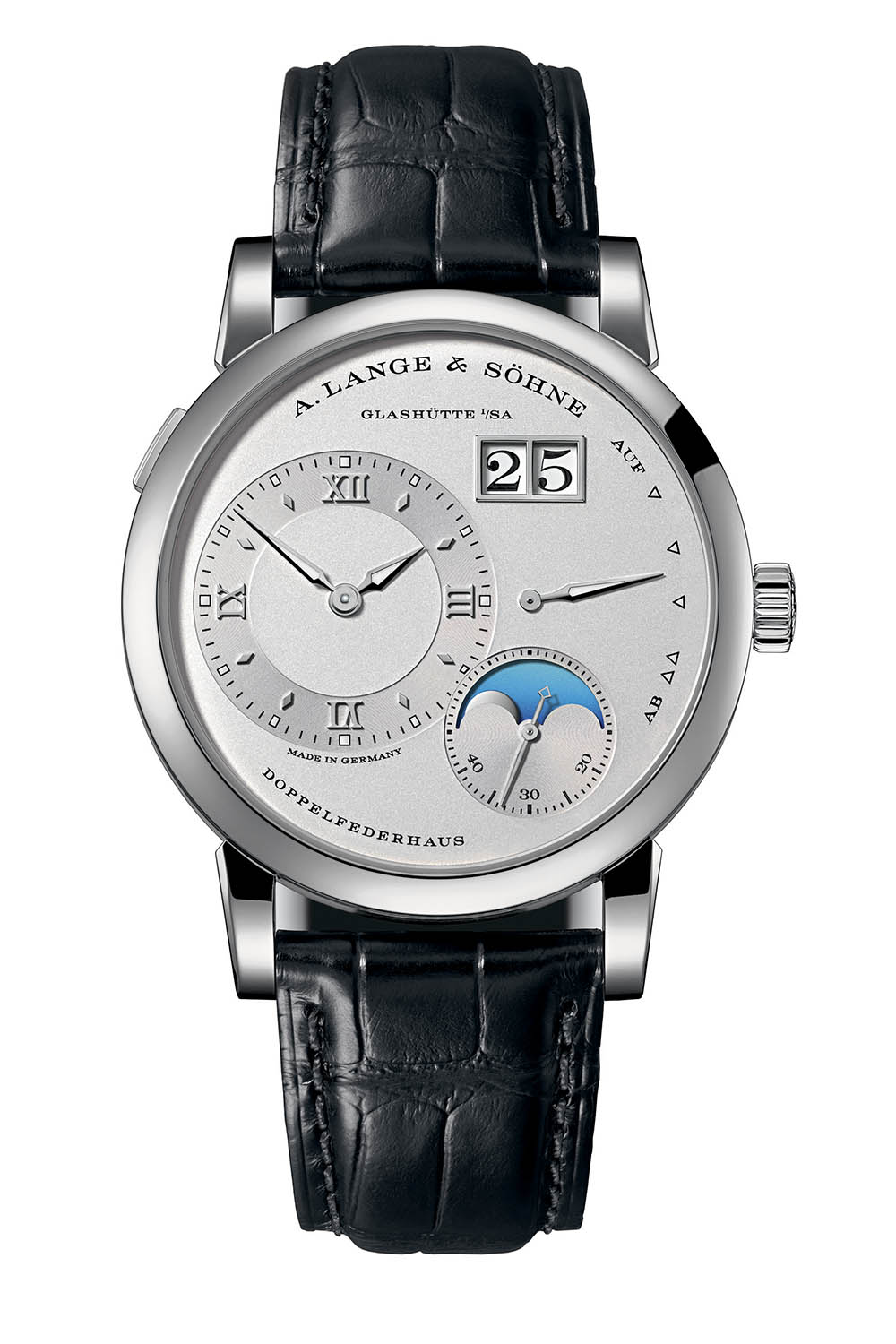


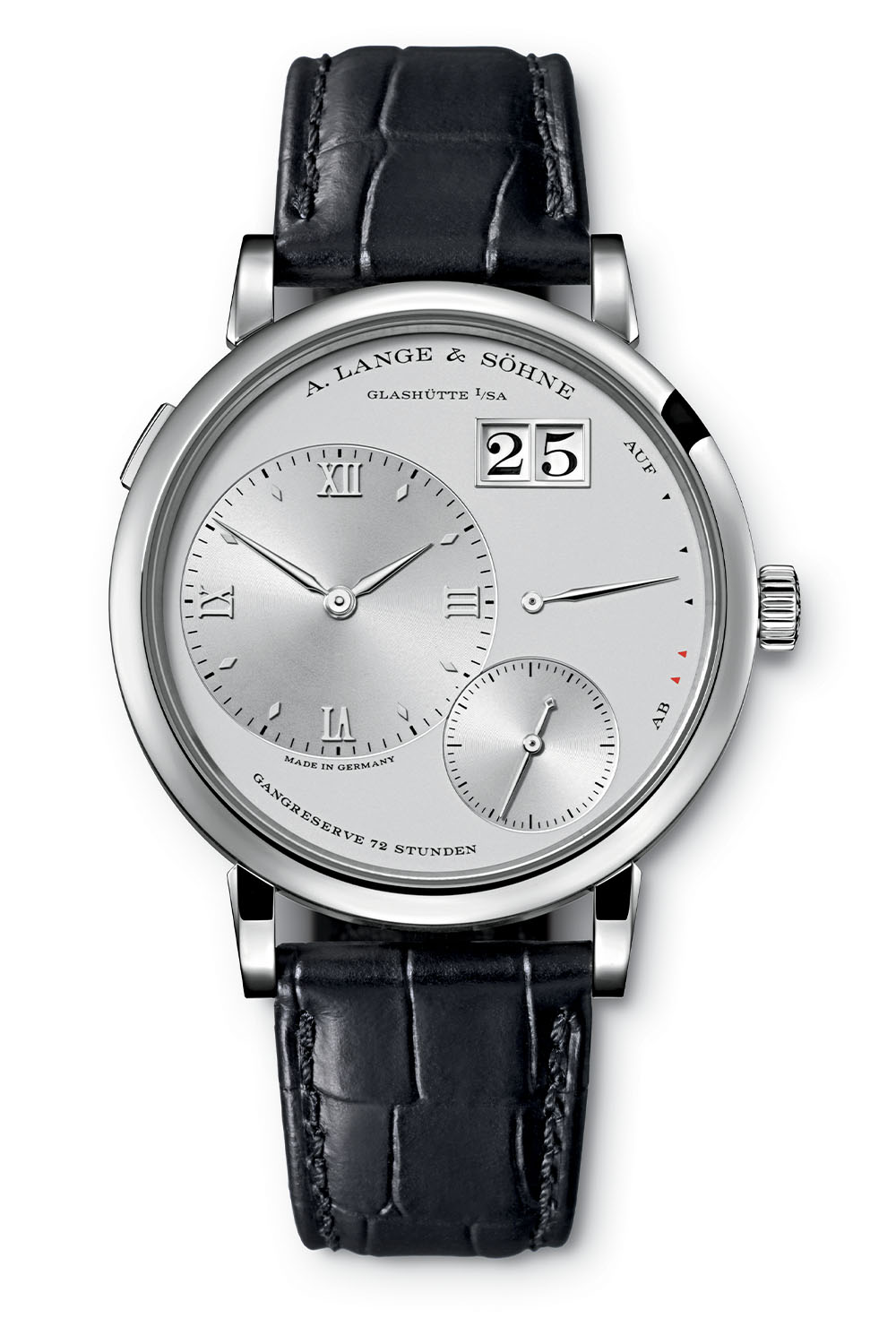




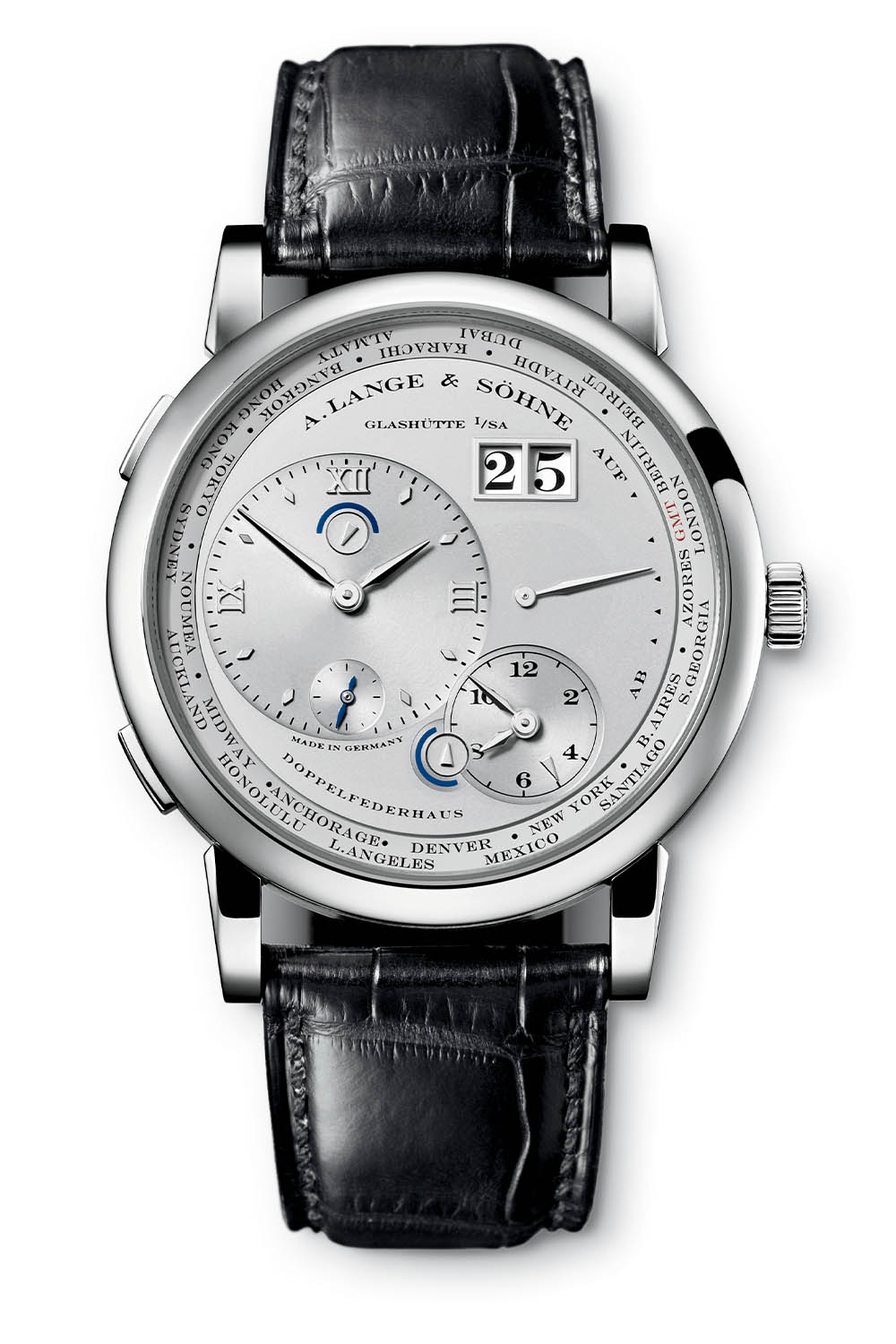








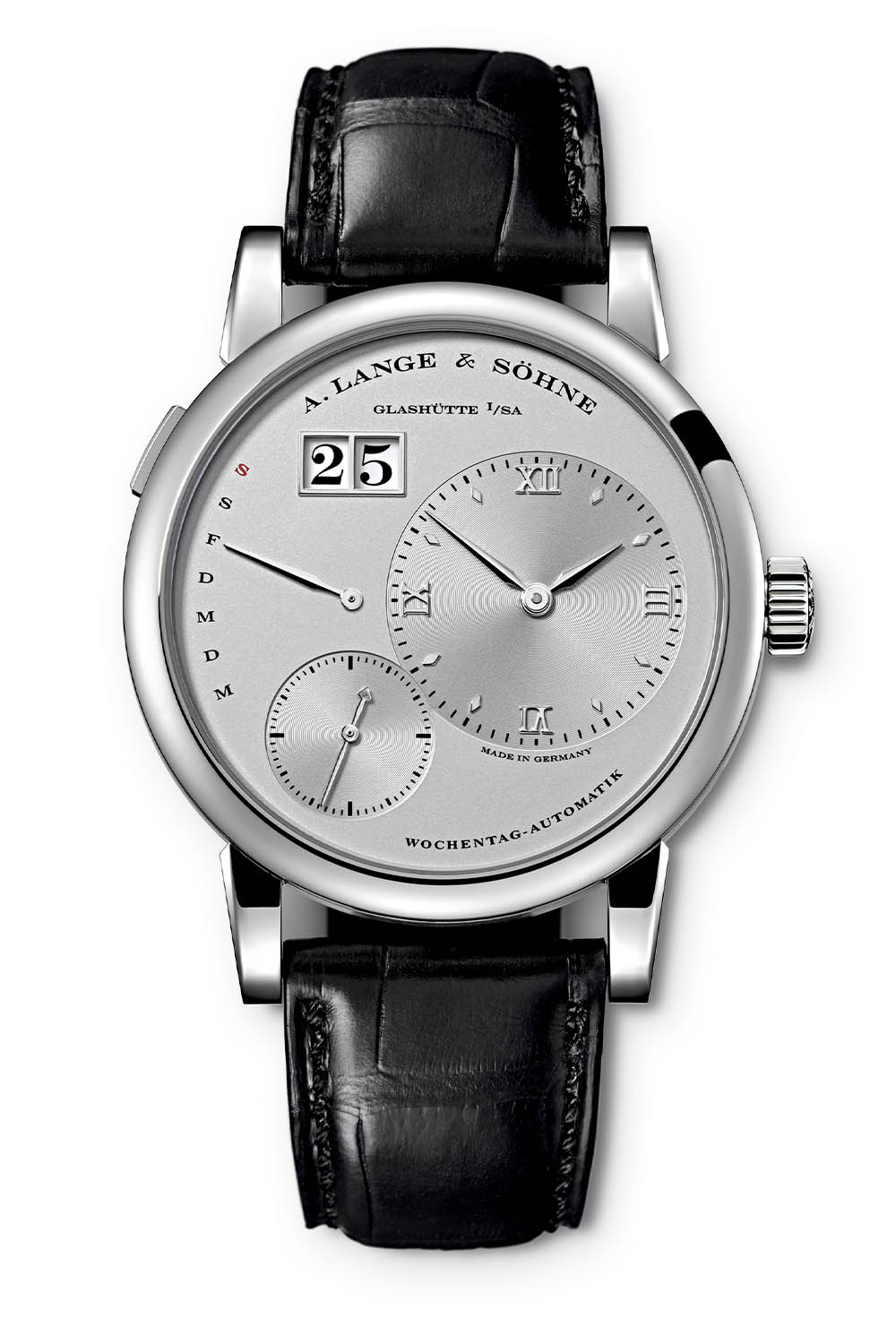






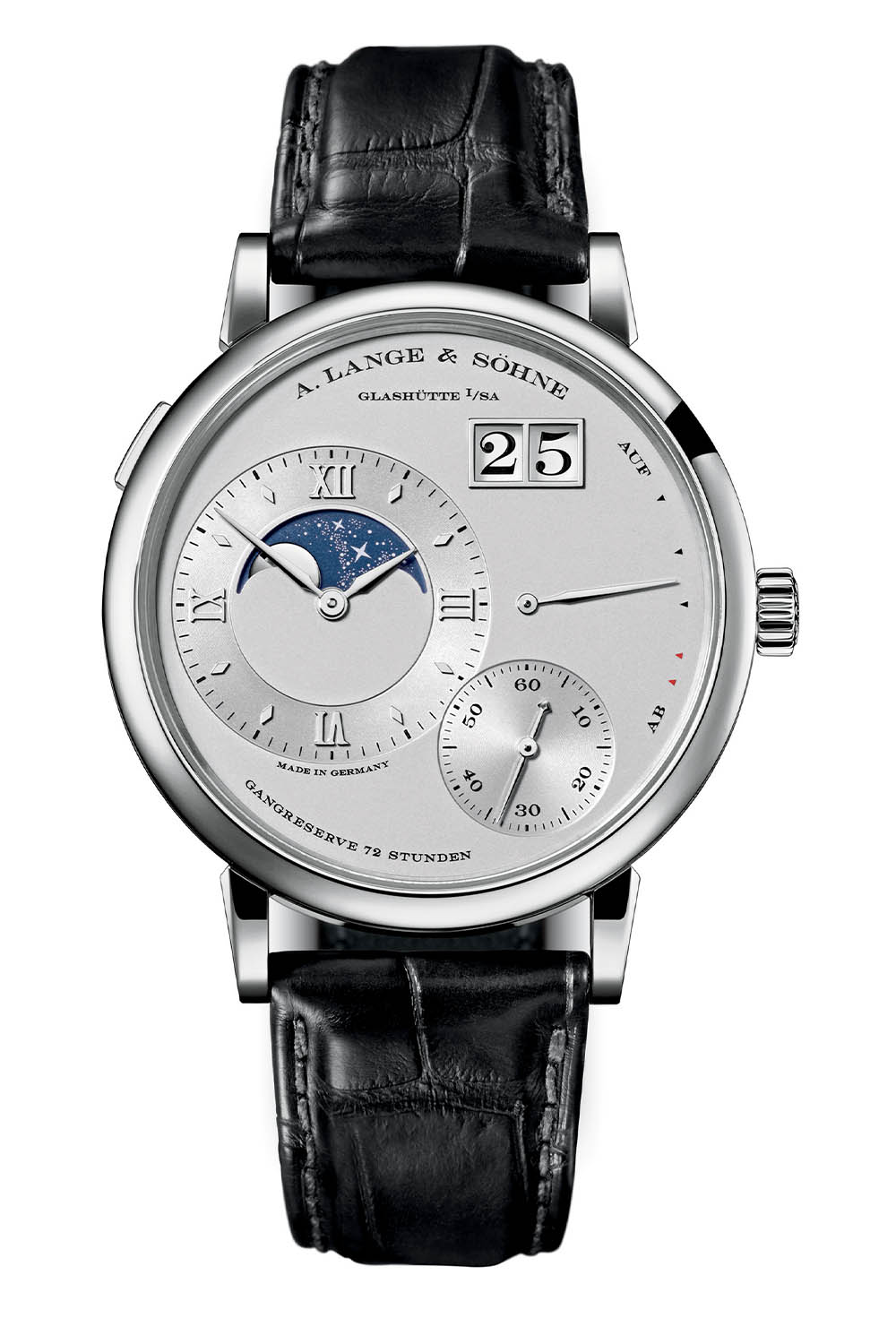









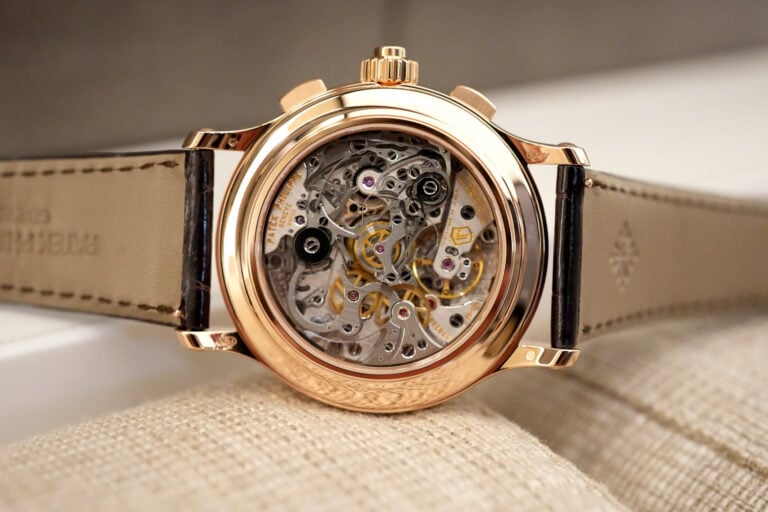
10 responses
Fabulous article on what is probably the most iconic watch made since 24 October 1994.
Thanks for putting in the effort to compile this Lange 1 Guide. This was much needed. The Lange 1 is one of the most Iconic and Significant watches of our times. And it sure makes me even prouder to be the custodian of a Lange 1 (second gen) in rose gold.
Dear Brice, thank you for exeptional reading! Still should correct you on early references. In very first Lange catalogue from Oct 1994 are only four Lange 1 refs mentioned: 101.001, 101.002, 101.005, and 151.001 (with bracelet). All of them have had solid case back ONLY without any option. In the next catalogue 1995/1996 its possible to choose between solid and sapphire case backs. And there and in price list is clearly mentioned, 101.00X (151.00X) references have solid case back, while 101.02X (151.02X) have sapphire.
This choice between solid CB and sapphire we can find also in 1997/98 catalogue (not only for 101, also for Saxonia models) with clear difference between both references – 00X and 02X. And only since 1999 there is only sapphire (02X) without solid case back, for both L1 and Saxonia.
If you need a proof for that, please contact me, I will picture abovementioned catalogues/price lists. So this text ‘For clarification, there are two types of early references, the 101.00X and the 101.02X. These watches are identical and shouldn’t be considered closed or opened back versions’ – is not really correct. Probably it’s time to correct this and your table 😉
Please also check Craig’s list (from CR on Purists), there is also proper description of all refs.
WBR
Serge
@serg70 – thanks for this great comment. It’s a relatively complex topic, which we discussed with the brand. And the article reflects what they told us regarding the early references. Now, considering what you say and the distinction seen in the catalogues, that makes the story indeed a bit different. We’ll certainly be in touch!
Superb info.
Thank you.
Think you guys are missing some of the mother of pearl pieces that came out in early 2000s.
110.029, white gold, plain mother of pearl (MOP)
110.030, white gold, guilloche
110.031, pink gold, guilloche
110.041, platinum, plain with dark tint
110.049, white gold, plain with blue tint made for Dubail and limited to 25 pieces
101.050 Honeygold Lange 1 is missing
I have a qn! Does reference starts with 151 means the watch comes with a bracelet? If so, whats the difference between 151.021 and 101.321?
I just purchased a preowned Lange 1 Time Zone 116.032. It is the most beautiful watch that I’ve owned and am now down the Lange rabbit hole. Hope to one day own the Datograph and a Darth.